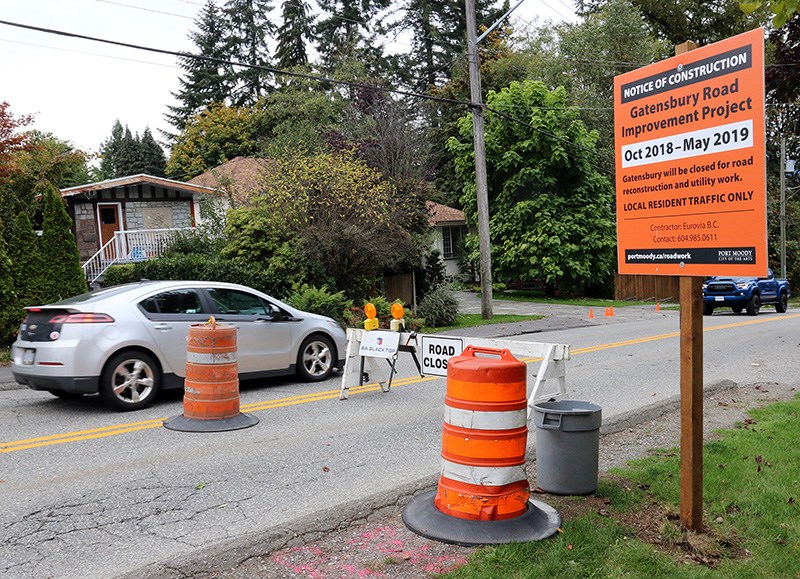Fewer people are driving around construction barriers on Gatensbury Street in Port Moody but residents say those who do are driving too fast.
Darryl Skipworth, who has lived on Gatensbury for 12 years, said drivers seem finally to be heeding the myriad of barriers and road closure signs that have advised them of the extensive construction project that started in early October to make the busy commuter route safer. But he said the removal of lane dividers and boulevards as crews work their way along the steep, winding two-lane road seems to be encouraging those drivers who continue to defy signage to drive faster than the 30 km/h speed limit.
Skipworth said the speeding traffic is especially a problem once the construction crews and flaggers have packed up for the day.
“The visual distraction isn’t there anymore and they gun it down the hill,” he said, adding he’s especially worried as winter rains, frost and darkness set in. “It’s a difficult road to drive at the best of times.”
Gatensbury is expected to remain closed to all but local residents until next May. Construction crews are updating sewers and water mains, evening out some of the blind curves and gradients that are as steep as 13%, installing raised medians, curbs and gutters, as well as a new three-metre-wide multi-use pathway for pedestrians and cyclists on the west side.
Stephen Judd, Port Moody’s acting general manager of engineering and operations, said the city is monitoring the traffic situation on Gatensbury and reviewing possible solutions along with Port Moody Police Department.
Gatensbury was identified as far back as 2007 as a priority for safety improvements and traffic calming. A traffic survey conducted by the city in 2015 determined about 5,500 vehicles a day travelled on the street, which is often used by commuters as a conduit between Coquitlam and Port Moody.
Prior to the start of construction earlier in October, the city of Port Moody placed several notice of construction signs along roads that feed Gatensbury as well as four electronic reader boards at locations on St. Johns Street and Como Lake Avenue. The city also advised residents in the area about the project with a letter, issued passes to allow people who live on the street to drive to and from their homes, and posted several notices on its social media channels and website.



